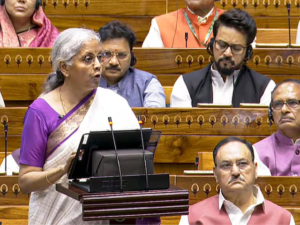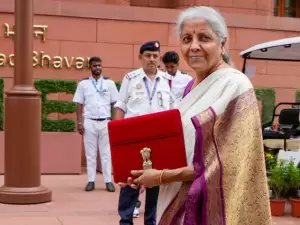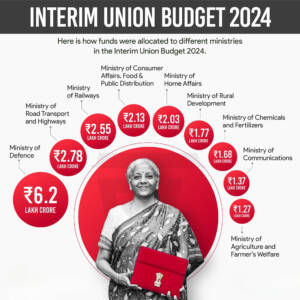
The Indian Government’s Budget for the fiscal year 2024 has been the subject of extensive discussion and analysis. As a crucial document, the Budget outlines the government’s financial strategy, addressing various sectors and reflecting its priorities for the upcoming year. This comprehensive analysis will explore the key aspects, significant changes, and the anticipated impact of the New Budget 2024 on India’s economy and its citizens.
1. Overview of the Budget
The Budget for 2024 was presented by the Finance Minister in the Parliament, highlighting the government’s commitment to economic growth, infrastructure development, and social welfare. With a focus on inclusive growth, the Budget aims to address critical areas such as healthcare, education, agriculture, infrastructure, and digitalization. The total expenditure for the fiscal year is projected to be ₹40 lakh crore, with a targeted fiscal deficit of 5.5% of the GDP.
2. Major Announcements and Allocations
2.1. Infrastructure Development
One of the standout features of the Budget is the substantial allocation for infrastructure development. The government has earmarked ₹10 lakh crore for the National Infrastructure Pipeline (NIP), aimed at building and upgrading roads, highways, ports, and airports. This allocation is expected to create jobs, boost economic activity, and enhance connectivity across the country.
2.2. Healthcare and Education
 The healthcare sector received a significant boost with an allocation of ₹2.5 lakh crore. This includes funding for the National Health Mission, Ayushman Bharat, and various other healthcare initiatives aimed at improving access to quality healthcare services. Additionally, the education sector has been allocated ₹1.8 lakh crore, with a focus on improving infrastructure, teacher training, and digital learning initiatives.
The healthcare sector received a significant boost with an allocation of ₹2.5 lakh crore. This includes funding for the National Health Mission, Ayushman Bharat, and various other healthcare initiatives aimed at improving access to quality healthcare services. Additionally, the education sector has been allocated ₹1.8 lakh crore, with a focus on improving infrastructure, teacher training, and digital learning initiatives.
2.3. Agriculture and Rural Development
To support the agricultural sector and rural development, the government has allocated ₹1.6 lakh crore. This includes funding for the Pradhan Mantri Fasal Bima Yojana, rural infrastructure development, and irrigation projects. The aim is to enhance productivity, ensure fair prices for farmers, and improve the overall quality of life in rural areas.
2.4. Digitalization and Technology
Recognizing the importance of technology in driving growth, the Budget has allocated ₹50,000 crore for digitalization initiatives. This includes funding for the Digital India program, promotion of start-ups, and development of digital infrastructure. The government aims to leverage technology to enhance governance, improve service delivery, and create a conducive environment for innovation.
3. Tax Reforms and Financial Measures
3.1. Personal Income Tax
One of the major highlights of the Budget is the revision of personal income tax slabs. The new tax regime offers lower rates for different income brackets, providing relief to middle-class taxpayers. The revised slabs are as follows:
- Income up to ₹2.5 lakh: Nil
- Income from ₹2.5 lakh to ₹5 lakh: 5%
- Income from ₹5 lakh to ₹10 lakh: 10%
- Income from ₹10 lakh to ₹20 lakh: 15%
- Income above ₹20 lakh: 20%
3.2. Corporate Tax
To attract investment and promote business growth, the corporate tax rate has been reduced to 22% for domestic companies and 15% for new manufacturing companies. This move is expected to enhance competitiveness, boost industrial activity, and generate employment opportunities.
3.3. GST Reforms
The Goods and Services Tax (GST) has undergone several changes to simplify compliance and increase revenue collection. The Budget proposes the introduction of a single GST return, a reduction in the number of tax rates, and measures to curb tax evasion. These reforms aim to create a more efficient and transparent tax system.

4. Social Welfare and Inclusivity
4.1. Women and Child Development
The Budget emphasizes the importance of gender equality and child development. An allocation of ₹1.2 lakh crore has been made for schemes aimed at women’s empowerment, child nutrition, and education. This includes funding for the Beti Bachao Beti Padhao scheme, maternity benefits, and skill development programs for women.
4.2. Senior Citizens and Disabled
To support senior citizens and individuals with disabilities, the government has allocated ₹60,000 crore for various welfare schemes. This includes pension schemes, healthcare facilities, and accessibility projects aimed at improving the quality of life for these vulnerable groups.
4.3. Housing and Urban Development
The Pradhan Mantri Awas Yojana (PMAY) has received a significant boost with an allocation of ₹80,000 crore. This scheme aims to provide affordable housing to the urban poor, with a target of constructing 2 crore houses by 2024. In addition, funding has been allocated for urban development projects, including smart cities and public transportation.
5. Environmental Sustainability
The Budget places a strong emphasis on environmental sustainability and combating climate change. An allocation of ₹70,000 crore has been made for initiatives aimed at reducing carbon emissions, promoting renewable energy, and conserving natural resources. This includes funding for the National Solar Mission, afforestation projects, and waste management programs.
6. Defense and Security
Recognizing the importance of national security, the defense sector has been allocated ₹5 lakh crore. This includes funding for modernization of the armed forces, procurement of advanced weaponry, and development of defense infrastructure. The government aims to enhance the country’s defense capabilities and ensure the safety and security of its citizens.
7. Economic Growth and Employment
7.1. MSME Sector
The Micro, Small, and Medium Enterprises (MSME) sector plays a crucial role in job creation and economic growth. The Budget has allocated ₹1 lakh crore for the MSME sector, with a focus on providing easy access to credit, promoting entrepreneurship, and enhancing competitiveness.
7.2. Job Creation Initiatives
To address the issue of unemployment, the government has announced several job creation initiatives. This includes funding for skill development programs, promotion of start-ups, and support for sectors with high employment potential such as tourism and hospitality. The aim is to create 1 crore new jobs by 2024.
8. Financial Inclusion
The Budget emphasizes the importance of financial inclusion and aims to provide all citizens with access to banking services. An allocation of ₹30,000 crore has been made for schemes aimed at promoting digital banking, expanding the reach of microfinance institutions, and enhancing financial literacy.
9. Sectoral Highlights
9.1. Real Estate
The real estate sector, which has been struggling with sluggish growth, received a boost with measures to improve liquidity and encourage investment. The government announced a stress fund of ₹25,000 crore to provide last-mile funding for stalled housing projects. Additionally, the tax holiday for affordable housing developers has been extended by another year, promoting the construction of affordable homes.
9.2. Tourism and Hospitality
Acknowledging the potential of the tourism and hospitality sector in generating employment and boosting the economy, the Budget allocated ₹10,000 crore for its development. This includes the promotion of heritage tourism, the development of tourist infrastructure, and marketing initiatives to attract international tourists. The government aims to create 50 lakh new jobs in this sector by 2024.
9.3. Renewable Energy
To combat climate change and promote sustainable development, the Budget places significant emphasis on renewable energy. An allocation of ₹20,000 crore has been made for the National Solar Mission, with a target of achieving 175 GW of renewable energy capacity by 2024. This includes funding for solar power projects, wind energy, and the development of green energy corridors.

10. Conclusion
The New Budget 2024 by the Indian Government is a comprehensive financial blueprint aimed at fostering inclusive growth, promoting economic stability, and enhancing the quality of life for all citizens. With significant allocations for infrastructure, healthcare, education, and social welfare, the Budget reflects the government’s commitment to addressing the nation’s critical needs. The emphasis on tax reforms, digitalization, and environmental sustainability further highlights the government’s forward-looking approach. As the country embarks on a new fiscal year, the successful implementation of the Budget will be crucial in achieving the desired economic and social outcomes.

